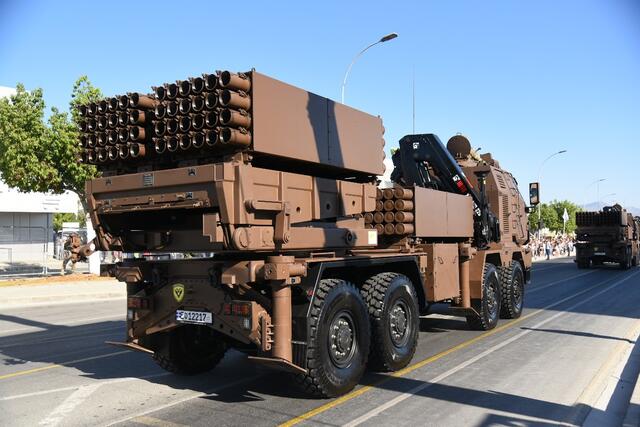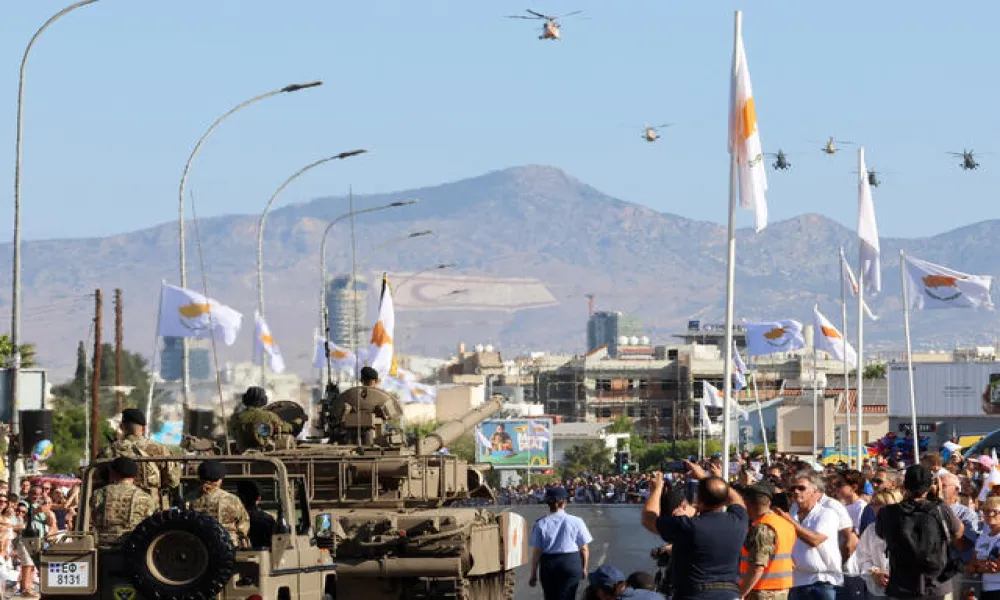The military parade marking Cyprus’ Independence Day has once again brought defence policy into sharp national focus. But behind the pageantry lies a significant and ongoing transformation: the near-complete pivot of the Republic of Cyprus toward Western partners in its defence procurement strategy. This shift is not simply a reaction to recent geopolitical developments. It began over a decade ago, following the island’s 2013 financial crisis.
Strategic realignment post-2013
Though Russia’s 2022 invasion of Ukraine and subsequent EU sanctions accelerated the trend, Cyprus had already begun distancing itself from Moscow militarily. The country’s westward tilt in armaments started in earnest in the mid-2010s, fuelled by two drivers: economic recovery after the bailout and growing prospects in Cyprus’s Exclusive Economic Zone (EEZ). With potential energy reserves at stake, policymakers saw the need to bolster naval capabilities, and thus defence procurement became a matter not only of national security, but also of energy diplomacy.
Israeli turn
The first major move came in 2018, when Cyprus acquired its first offshore patrol vessel, Ioannides, under a bilateral agreement with Israel. Around the same time, the Cypriot National Guard replaced its legacy G3 rifles with Israeli-made Tavor assault riflesL modern firearms that also triggered a shift to NATO-standard 5.56x45mm ammunition, replacing the older 7.62x51mm rounds. This move brought Cypriot forces in line with most Western militaries.
The island’s growing strategic partnership with Israel further deepened in 2021 when Cyprus selected the Barak MX air defence system, one of Israel’s most advanced. The decision followed a lengthy evaluation process and was based on the system’s compatibility with Cyprus’ terrain and threat profile. The system is now being deployed in stages and is expected to be fully operational by year-end.

Departure from Russian suppliers
Another headline acquisition was the replacement of Russian Mi-35 attack helicopters with six Airbus H145M light attack helicopters. The sale was more than a technical upgrade, it was a political and diplomatic statement. Purchased from the Franco-German Airbus consortium, the H145Ms signal a further departure from Russian suppliers, with the decommissioned Mi-35s sold to the Serbian Air Force for €105 million.
Cyprus’s pivot has not been limited to NATO-aligned suppliers. Serbia, a country with longstanding military-industrial capacity, has emerged as a key defence partner.
In 2017, Cyprus inked a deal with Belgrade to acquire 24 Nora B-52 155mm self-propelled howitzers mounted on 8×8 vehicles. These entered service in 2020 and significantly boosted the National Guard’s artillery capability, capable of firing up to 11 rounds per minute with a maximum range of 42 kilometres.
More recently, Cyprus quietly procured MLRS-type rocket launchers (TAMNAVA) from Serbia. First publicly seen during this year’s military parade, the modular system can launch both 122mm and 262mm rockets, with ranges of 40km and 70km respectively, from armoured MAN 8×8 trucks. Each launcher is operated by a three-person crew.
Looking West: US arms and programmes
Cyprus is also looking to Washington. Following the lifting of the US arms embargo and the island’s entry into three US military programmes, Cypriot and American officials have been engaged in technical discussions. The General Staff of the National Guard is currently assessing options provided by Washington, with decisions expected in 2026.
The overarching strategic goal: reduce dependency on Russian military systems. The Barak MX will help fill the potential gap left by Russian-made air defence systems once spare parts and munitions become difficult to procure. In the short term, those systems remain active within Cyprus’s air defence network, but their future is uncertain.
A particularly sensitive challenge is the future of Russian T‑80 main battle tanks. The Ministry of Defence is evaluating replacement options from the US, Germany, and Israel. The aim is clear: modernise, Westernise, and reduce strategic risk.
